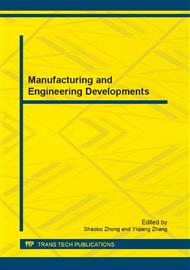p.97
p.105
p.111
p.115
p.119
p.124
p.129
p.133
p.138
Improved Artificial Potential Field Method Manipulator Inverse Kinematics
Abstract:
The use of traditional analytical method for manipulator inverse kinematics is able to get a display solution with the limitations of the application, only when the robotic arm has a specific structure. In view of the insufficient, this paper presents an improved artificial potential field method to solve the inverse kinematics problem of the manipulator which does not have a special structure. Firstly, establish the standard DH model for the robot arm. Then the strategy that improves search space of artificial potential field method and motion control standard is presented by combining artificial potential field method with the manipulator. Finally, the simulation results show that the proposed method is effective.
Info:
Periodical:
Pages:
119-123
Citation:
Online since:
January 2013
Authors:
Price:
Сopyright:
© 2013 Trans Tech Publications Ltd. All Rights Reserved
Share:
Citation:


